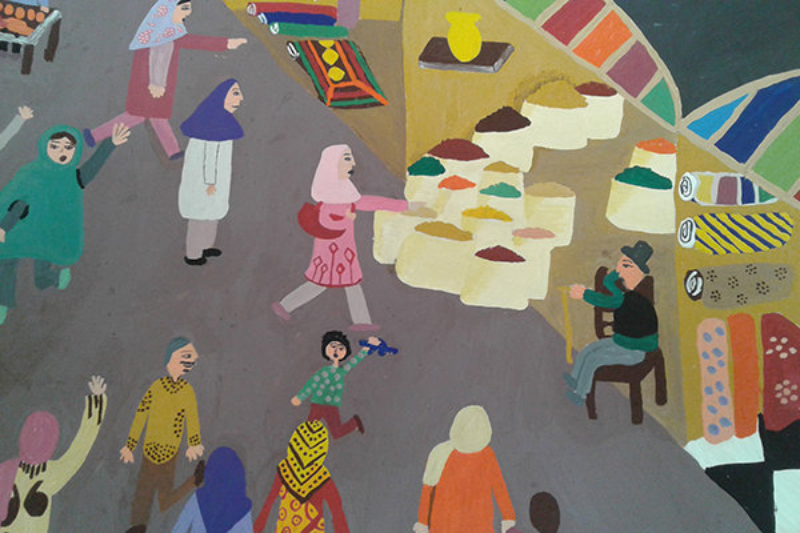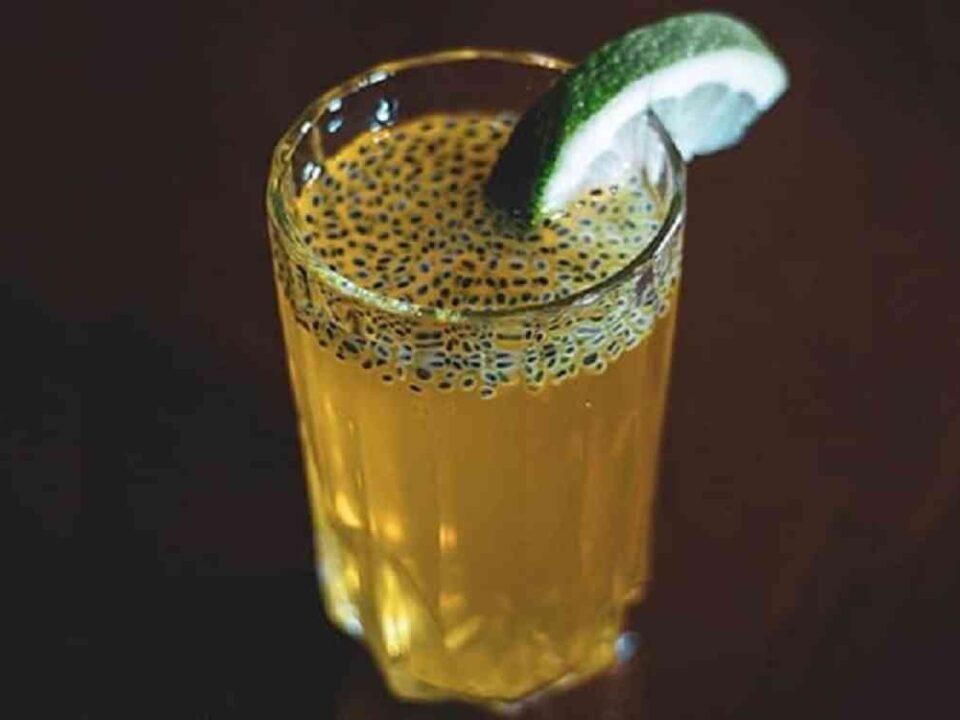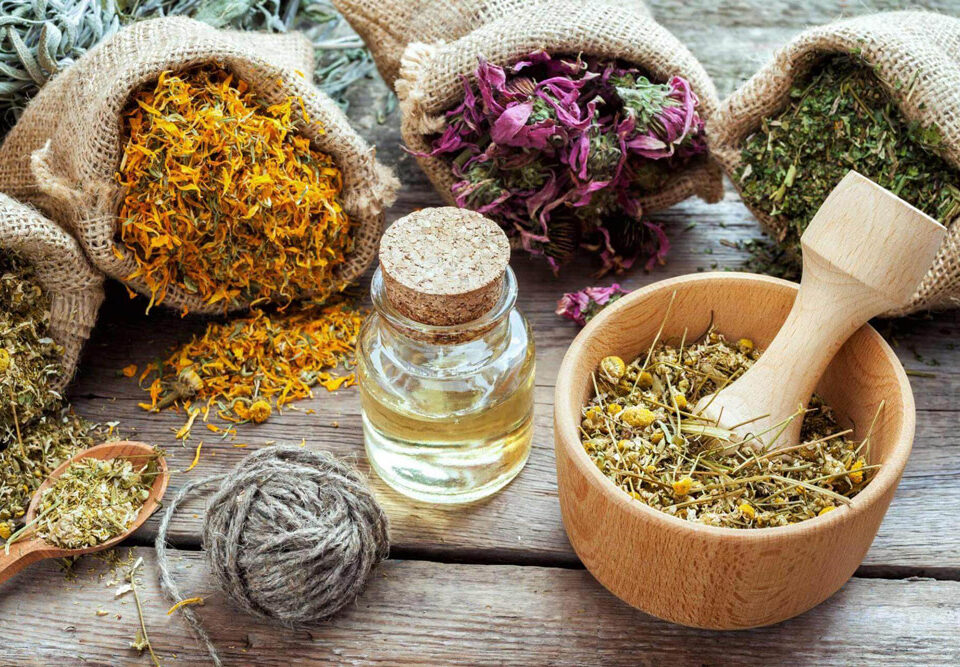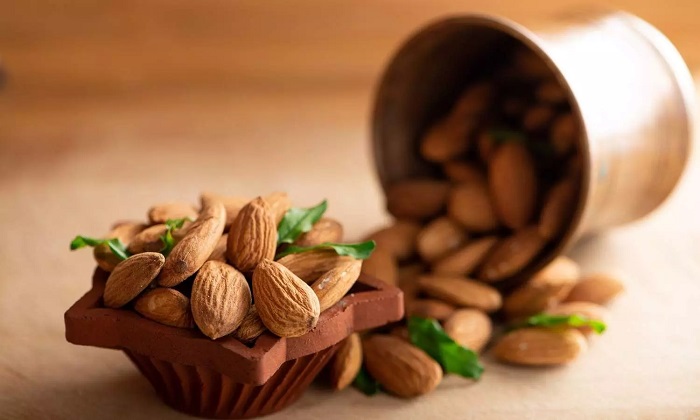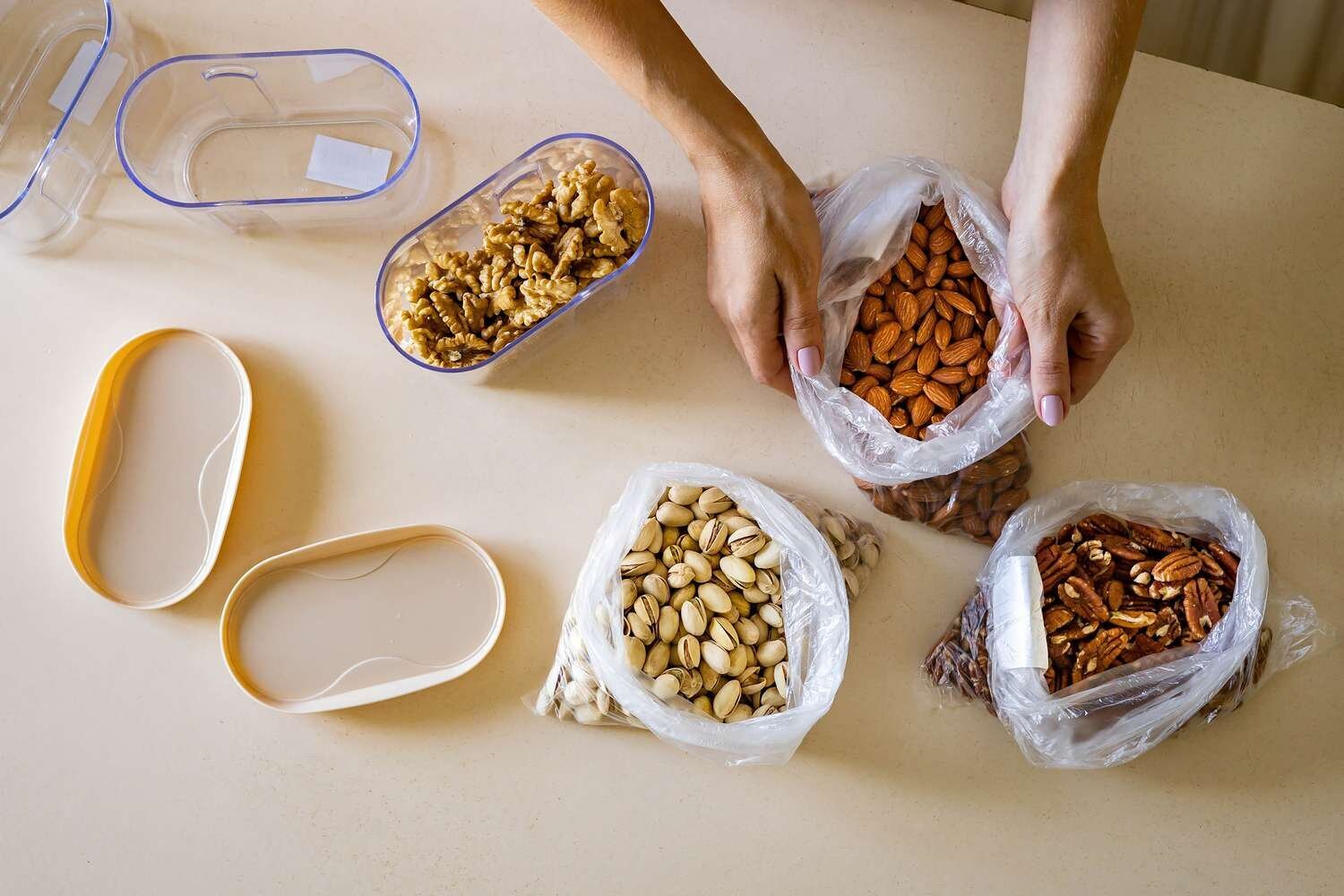
Proper Storage of Nuts and Dried Fruits
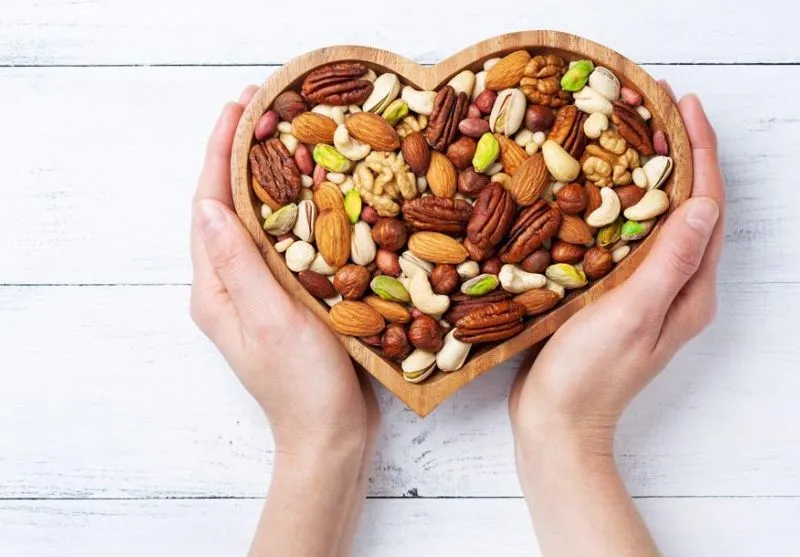
Nuts and Heart Health
From Ancient Times to Today
Iran has a rich culinary history that spans thousands of years, and the use of spices has played a significant role in shaping the flavors of Persian cuisine. The strategic location of Iran, at the crossroads of the Silk Road, allowed the exchange of spices, herbs, and culinary techniques with neighboring civilizations, contributing to the diverse and aromatic cuisine we know today. Let’s explore the history of spice use in Iran, from ancient times to the modern era.
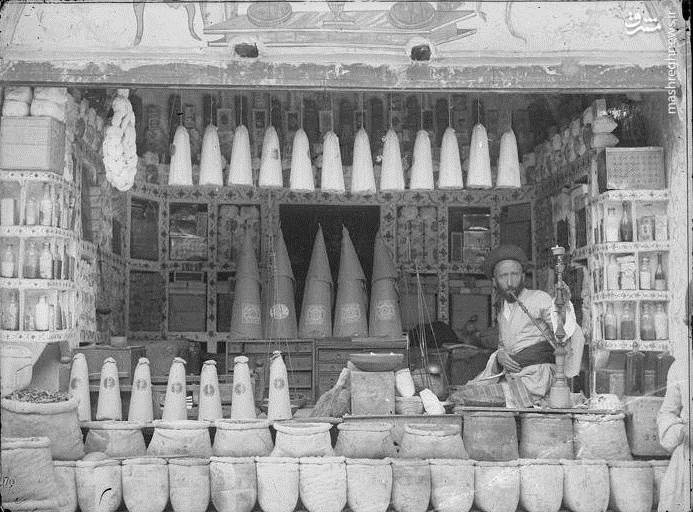
History of Spice Use in Iran
1. Ancient Times: The Early Roots of Persian Spices
The use of spices in Iran dates back to ancient times, as early as 2000 BCE. Archaeological evidence shows that ancient Persians had access to various spices, and the use of herbs and aromatic plants was common in both food preparation and medicine. Spices like cumin, coriander, and fenugreek were used to flavor food and treat ailments.
Zoroastrian Influence:
- In the Zoroastrian era (c. 1500-600 BCE), Persian cuisine was closely linked to spirituality. Certain spices and herbs were considered sacred and used in religious rituals and feasts. Saffron, for instance, held a special place in Zoroastrianism for its golden color and aromatic properties.
- Ancient texts mention that fragrant herbs and spices were incorporated into cooking to preserve food and enhance its flavor, particularly in royal banquets and religious ceremonies.
Trade and Spice Routes:
- Iran’s location along the Silk Road played a crucial role in the exchange of spices between Asia, the Middle East, and Europe. Spices like cinnamon, cardamom, and pepper were traded through Persian ports and caravans, making them integral to Persian cuisine.
- Iranian traders facilitated the spread of exotic spices from India, China, and Southeast Asia to Europe, while also introducing Persian culinary traditions to other parts of the world.
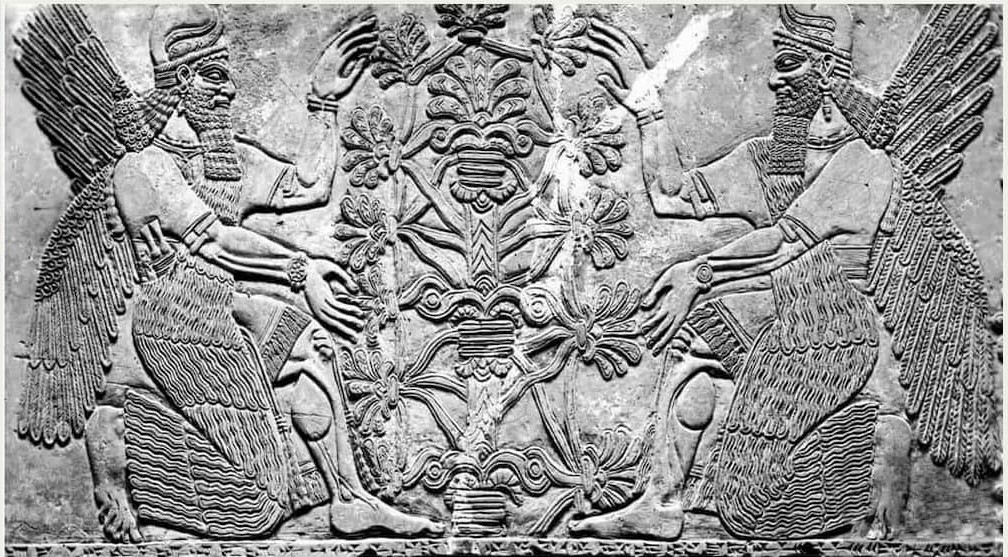
History of Spice Use in Iran
2. Achaemenid Empire (c. 550-330 BCE): The Golden Age of Spice Trade
The Achaemenid Empire marked the first great Persian empire, and with its vast territory came the introduction of a variety of spices. This period saw the fusion of culinary influences from across the empire, including ingredients from India, Mesopotamia, Central Asia, and the Mediterranean.
Key Spices Introduced During This Period:
- Cinnamon and cardamom were introduced to the Persian court from India and became widely used in both food and perfume.
- Saffron, which originated in ancient Persia, became a treasured spice, often reserved for royalty and religious offerings due to its high value and labor-intensive production.
- Cumin and coriander were staples in Persian kitchens, often used to season meat dishes and stews.
The Achaemenid emperors, particularly Cyrus the Great and Darius I, were known for hosting grand feasts where spices and herbs were used to create dishes that reflected the empire’s wealth and diversity.
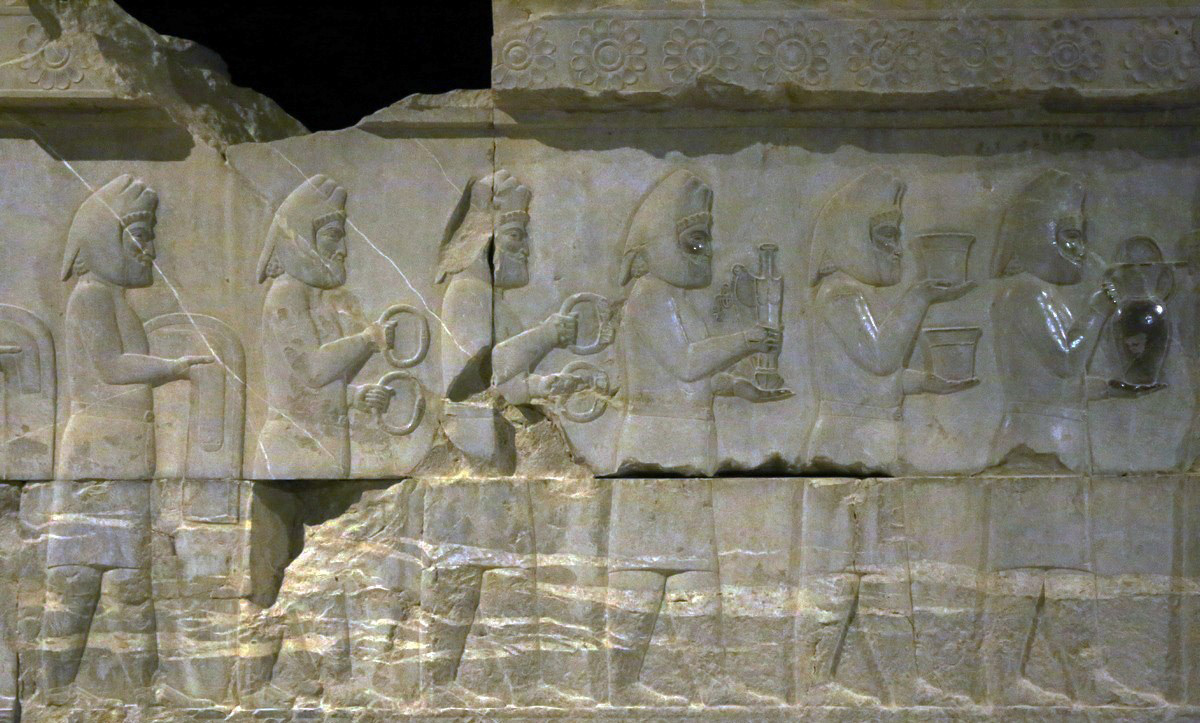
Achaemenid Empire
3. Sassanid Empire (224-651 CE): The Height of Persian Culinary Innovation
The Sassanid Empire is considered a golden age for Persian cuisine, particularly the use of spices. It was during this period that Persian cuisine became more refined, with an emphasis on complex flavors created through the careful blending of spices and herbs.
Spice Blends and Culinary Techniques:
- The Sassanids were known for their elaborate feasts and banquets, where dishes were seasoned with a variety of spices to impress guests. Cinnamon, cardamom, clove, and nutmeg were commonly used to flavor meats, rice, and stews.
- Advieh, a traditional Persian spice blend, became popular during this time, combining spices like cumin, coriander, cinnamon, rose petals, and turmeric. This blend is still used in Persian cooking today, particularly in dishes like polow (rice dishes) and khoresht (stews).
- The Sassanid royal court also developed new cooking techniques that involved the layering of flavors through slow cooking and the use of aromatic spices to elevate the taste of meats, stews, and rice.

Vegetal motifs of the Sassanid period
The Influence of Zoroastrian Feasts:
- Religious festivals such as Nowruz (Persian New Year) and other Zoroastrian ceremonies included elaborate feasts where spices were used to prepare ceremonial dishes, signifying prosperity and the renewal of life.
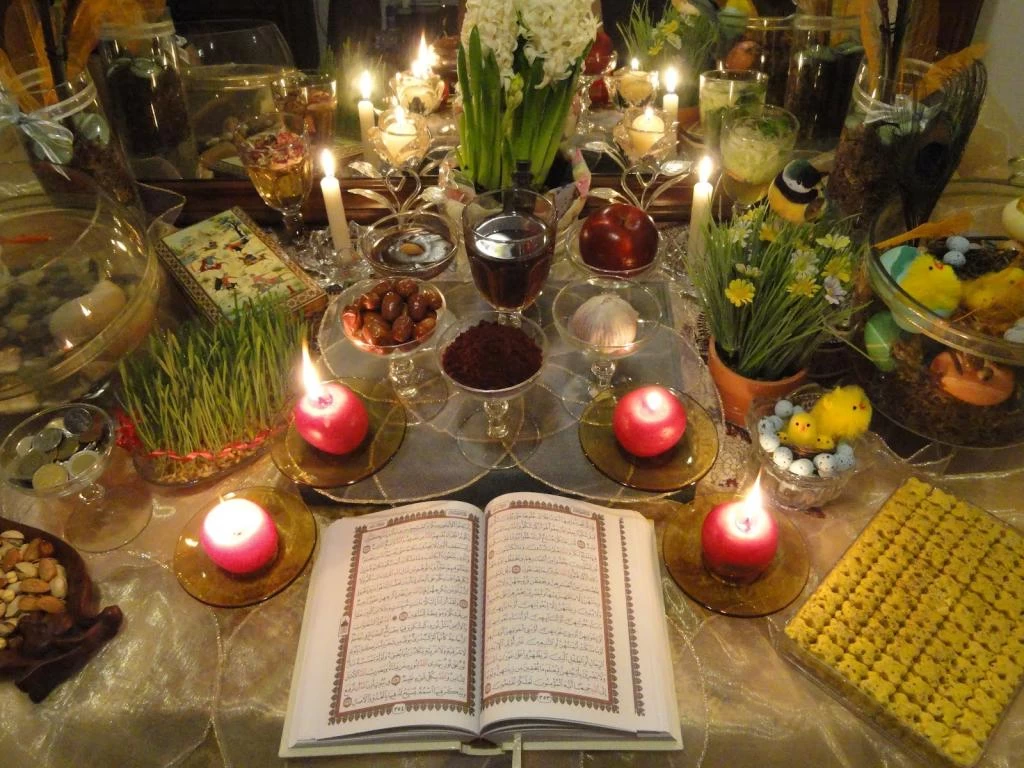
Haft Sin in Nowruz
4. Islamic Golden Age (7th-13th Century): The Fusion of Cultures
With the rise of Islam and the fall of the Sassanid Empire in the 7th century, Persian cuisine began to blend with the culinary traditions of the Islamic caliphates. This period, often referred to as the Islamic Golden Age, saw Persian cuisine influence the broader Islamic world while also absorbing culinary techniques and spices from Arab, Turkish, and Central Asian cultures.
The Expansion of the Spice Trade:
- The Islamic caliphates expanded Persian trade routes, particularly under the Abbasid Caliphate, which facilitated the exchange of spices such as saffron, ginger, black pepper, nutmeg, and cloves.
- Baghdad became a major center for spice trading, and Persian culinary traditions spread across the Middle East, North Africa, and parts of Europe through these routes.
Persian Influence on Islamic Cuisine:
- Persian cooks, particularly from Khorasan and Isfahan, became renowned for their ability to use spices to create rich, aromatic dishes, influencing the royal kitchens of the Abbasid caliphs.
- Dishes like Fesenjan (a walnut and pomegranate stew) and Biryani (a spiced rice dish) from this period still reflect the complex use of spices that were developed in Persian kitchens.
5. Safavid Dynasty (1501-1736): The Renaissance of Persian Cuisine
The Safavid dynasty marked a renaissance in Persian cuisine and the continued importance of spices. The Safavids reestablished Persian identity and promoted Persian art, culture, and cuisine. The use of spices became more refined, with a greater emphasis on balance and harmony in flavor.
The Evolution of Persian Cooking:
- During the Safavid era, Persian cooking focused on creating a delicate balance between sweet, sour, and savory flavors, using spices like saffron, cinnamon, rose petals, and cardamom.
- The Safavid royal court hosted elaborate banquets with dishes that featured spice blends and sauces designed to enhance both taste and digestion. Khoresht-e Karafs (celery stew) and Tahchin (saffron rice and chicken) became popular dishes of the time.
Culinary Diplomacy:
- Persian cuisine became a form of diplomacy during the Safavid era, with spices and recipes being exchanged between the Persian court and neighboring empires like the Ottomans and Mughals. Persian chefs were highly regarded and contributed to the culinary traditions of other Islamic courts, further cementing the reputation of Persian cuisine.

Safavid painting
6. Modern Times: The Continued Legacy of Persian Spices
In modern Iran, the use of spices remains central to Persian cuisine. Many of the spices and techniques that were developed over centuries are still used today, continuing the rich culinary heritage of the country.
Popular Spices in Modern Iranian Cooking:
- Saffron: Iran is the largest producer of saffron in the world, and it is still considered the crown jewel of Persian spices, used in everything from Chelo (saffron rice) to Sholeh Zard (saffron rice pudding).
- Turmeric: A staple in Iranian kitchens, turmeric is used to flavor stews, soups, and rice dishes.
- Sumac: A tangy, citrusy spice that is often sprinkled over grilled meats like kebabs and added to salads.
- Advieh: The traditional Persian spice blend continues to be used in modern dishes like Sabzi Polo (herb rice) and Baghali Polo (rice with fava beans).
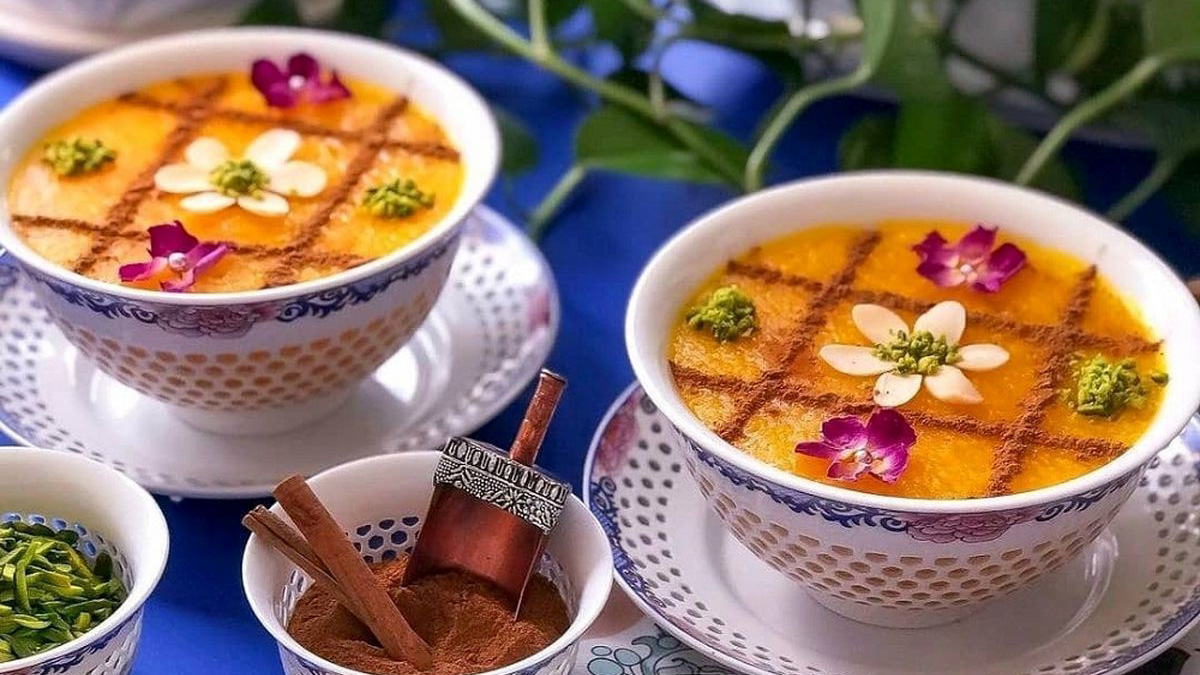
Sholeh Zard
Global Influence:
- Persian spices, particularly saffron, rose petals, and sumac, have become internationally recognized and are now used in a variety of global cuisines. Iranian cuisine itself has gained popularity worldwide, with Persian restaurants showcasing the rich use of spices that define the country’s culinary tradition.
Conclusion
From ancient times to the present day, the use of spices in Iran has been integral to the development of Persian cuisine. Influenced by trade routes, religious practices, and cultural exchanges, Iranian spices like saffron, cumin, turmeric, and rose petals have shaped the flavors of dishes that continue to be enjoyed both in Iran and around the world. Persian cuisine’s emphasis on balance, harmony, and the artful use of spices ensures that its rich culinary heritage remains timeless.

